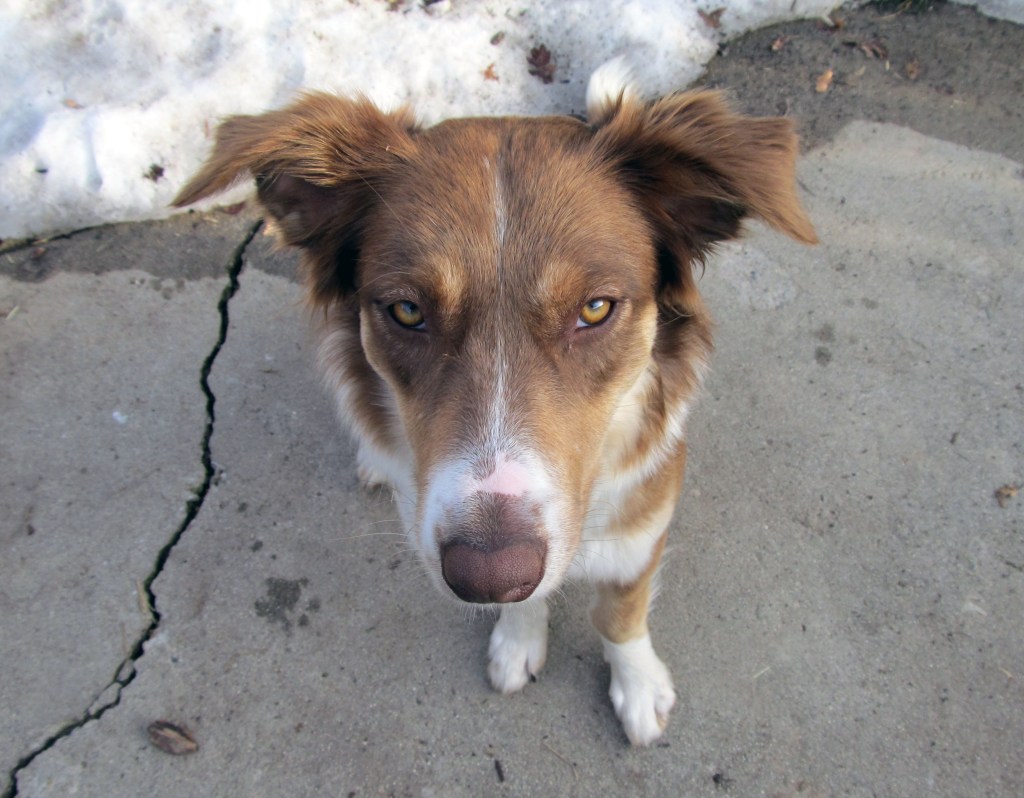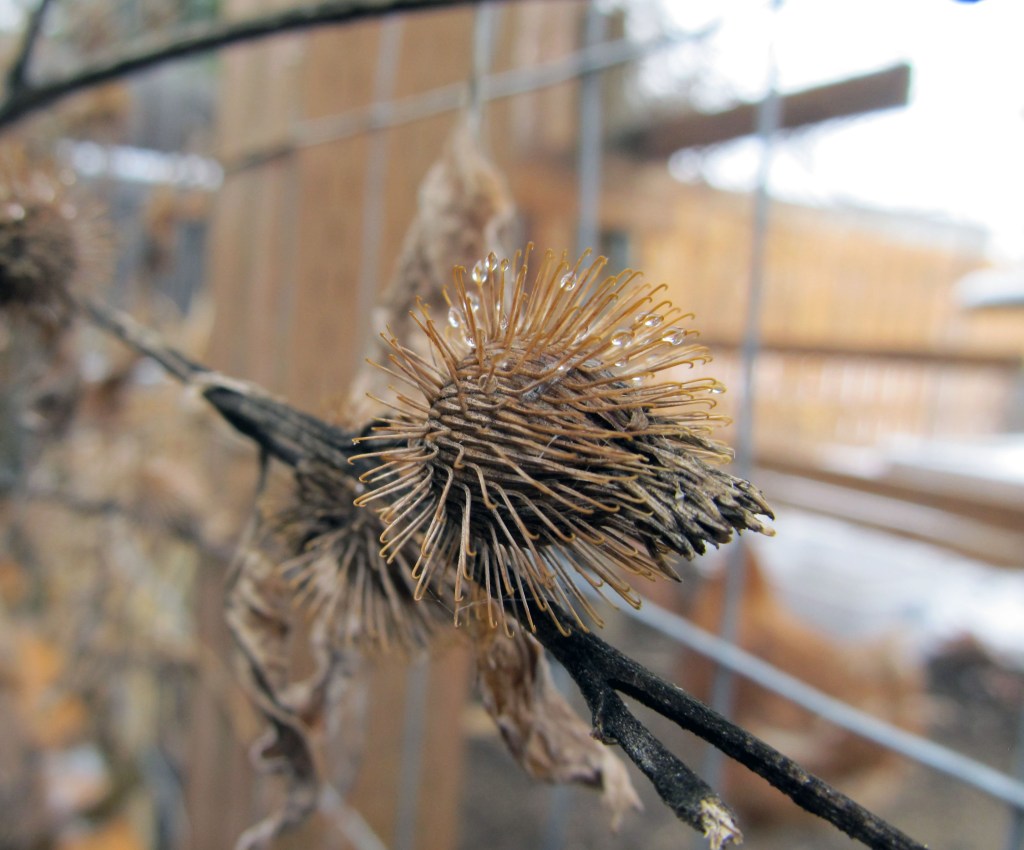It is said that the inspiration for Velcro came when Swiss inventor, George de Mestral, was removing the burrs of burdock from his dog’s coat, an experience we had with Kōura just days after adopting her. I knew that common burdock was found on our property, and I had made a point to remove all the plants that I could easily get to. However, during Kōura’s thorough exploration of our yard, she managed to find the one plant I had yet to pull due to its awkward location behind the chicken coop.

I knew when I saw the clump of burrs attached to her hind end that we were going to spend the evening combing them out of her fur. However, not long after that we discovered that Kōura had already started the process and in doing so had either swallowed or inhaled some. What tipped us off was her violent hacking and gagging as she moved frantically around the living room. She was clearly distraught, and so were we. Recognizing that she had probably swallowed a burr, we made a quick decision to take her to an emergency vet. This was our unfortunately timed (this happened on Christmas Eve) introduction to burr tongue and all the frightening things that can happen when a dog swallows burdock burrs.
The roots, shoots, and leaves of both greater burdock (Arctium lappa) and common burdock (Arctium minus) are edible, which I have already discussed in an Eating Weeds post. The burrs, on the other hand, are clearly not. While sticking to the fur of animals and the clothing of people is an excellent way for a plant to get their seeds dispersed, the sharp, hooked barbs that facilitate this are not something you want down your throat. When this occurs, the natural response is to try to hack them up, which Kōura was doing. Salivating heavily and vomiting can also help. In many cases, this will be enough to eliminate the barbs. However, if they manage to work their way into the soft tissues of the mouth, tongue, tonsils, or throat and remain there, serious infection can occur.

A paper published in The Canadian Veterinary Journal in 1973 describes the treatment for what is commonly known as burr tongue and technically referred to as granular stomatitis. The paper gives an account of what can happen when “long-haired breeds of dogs … run free in areas where [burdock] grows” and the hooked scales of the burrs consequently “penetrate the mucous membrane of the mouth and tongue.” Dogs with burrs imbedded in their mouths may start eating less or more slowly, drinking more water, and drooling excessively. As infection progresses, their breath can start to stink. A look inside the mouth and at the tongue will reveal lesions where the burrs have embedded themselves. Treatment involves putting the dog under anesthesia, scraping away the infected tissue, and administering antibiotics. Depending on the severity of the lesions, scar tissue can form where the barbs were attached.
To prevent infection from happening in the first place, a veterinarian can put the dog under anesthesia and use a camera inside the dog’s mouth and throat to search for pieces of the burr that may have gotten lodged. There is no guarantee that they will find them all or be able to remove them, and so the dog should be monitored over the next several days for signs and symptoms. At our veterinary visit, the vet also warned us that if any burrs were inhaled into the lungs, they could cause a lung infection, which is another thing to monitor for since it would be practically impossible for an x-ray or a camera to initially find them.

Luckily, now more than three weeks later, Kōura appears to be doing fine, and the offending burdock has been taken care of. One thing is for sure, as someone who is generally forgiving of weeds, burdock is one weed that will not be permitted to grow at Awkward Botany Headquarters.
